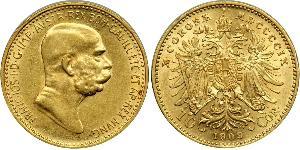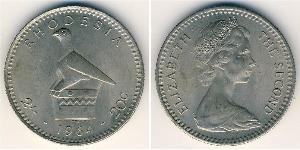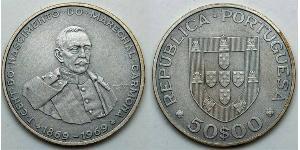(sold for $13.0)
1930, Germany (Weimar). Large Silvered Bronze "Relief of the Rhine" Medal. XF!
Mint Year: 1930 Meddalist: MM? Denomination: Medal - Relief of the Rhine, 1930 Condition: Light dettoriation evident (some of the silver plating has peeled off), otherwise XF! Material: Bronze (silver plated) Weight: 19.34gm Diameter: 37mm
Obverse: River (or Neptune) god seated, holding trident leaning on rock adorned with vine. Legend: BEFREIUNGS- / FEIER / 1930 / MM ("Rhine Relief Festivities, 1930") Reverse:Hand with two fingers raised (swearing) inside inner circle. Legend: * DEVTSCH IST DER RHEIN, DEVTSCH SOLL ER SEIN ("The Rhine is German and it should be German.")
The Constitution of the German Reich (German: Die Verfassung des Deutschen Reichs), usually known as the Weimar Constitution (Weimarer Verfassung) was the constitution that governed Germany during the Weimar Republic (1919-1933). The constitution declared Germany to be a democratic parliamentary Republic. It technically remained in effect throughout the existence of the Third Reich from 1933 to 1945. The constitution's title was the same as the Constitution of the German Empire that preceded it. The German state's official name was Deutsches Reich until the adoption of the 1949 "basic law".
Since the Peace of Westphalia, the Upper Rhine formed a contentious border between France and Germany. Establishing "natural borders" on the Rhine was a long-term goal of French foreign policy, since the Middle Ages, though the language border was – and is – far more to the west. French leaders, such as Louis XIV and Napoleon Bonaparte, tried with varying degrees of success to annex lands west of the Rhine. The Confederation of the Rhine was established by Napoleon, as a French client state, in 1806 and lasted until 1814, during which time it served as a significant source of resources and military manpower for the First French Empire. In 1840, the Rhine crisis, prompted by French prime minister Adolphe Thiers's desire to reinstate the Rhine as a natural border, led to a diplomatic crisis and a wave of nationalism in Germany.
The Rhine became an important symbol in German nationalism during the formation of the German state in the 19th century (see Rhine romanticism).
- The song Die Wacht am Rhein, which became almost a national anthem.
- Das Rheingold – inspired by the Nibelungenlied, the Rhine is one of the settings for the first opera of Richard Wagner's Der Ring des Nibelungen. The action of the epic opens and ends underneath the Rhine, where three Rheinmaidens swim and protect a hoard of gold.
- The Loreley/Lorelei is a rock on the eastern bank of the Rhine, that is associated with several legendary tales, poems and songs. The river spot has a reputation for being a challenge for inexperienced navigators.
At the end of World War I, the Rhineland was subject to the Treaty of Versailles. This decreed that it would be occupied by the allies, until 1935 and after that, it would be a demilitarised zone, with the German army forbidden to enter. The Treaty of Versailles and this particular provision, in general, caused much resentment in Germany and is often cited as helping Adolf Hitler's rise to power. The allies left the Rhineland, in 1930 and the German army re-occupied it in 1936, which was enormously popular in Germany. Although the allies could probably have prevented the re-occupation, Britain and France were not inclined to do so, a feature of their policy of appeasement to Hitler.
In World War II, it was recognised that the Rhine would present a formidable natural obstacle to the invasion of Germany, by the Western Allies. The Rhine bridge at Arnhem, immortalized in the book, A Bridge Too Far and the film, was a central focus of the battle for Arnhem, during the failed Operation Market Garden of September 1944. The bridges at Nijmegen, over the Waal distributary of the Rhine, were also an objective of Operation Market Garden. In a separate operation, the Ludendorff Bridge, crossing the Rhine at Remagen, became famous, when U.S. forces were able to capture it intact – much to their own surprise – after the Germans failed to demolish it. This also became the subject of a film, The Bridge at Remagen. Seven Days to the River Rhine was a Warsaw Pact war plan for an invasion of Western Europe during the Cold War.
Only 1$ shipping for each additional coin purchased!

|
Posted by:
anonymous 2018-05-17 |
10 Zloty Second Polish Republic (1918 - 1939) Silver Józef P ...
group has 119 coins / 105 prices
⇑
1 Ruble Russian Empire (1720-1917) Silver Alexander I of Rus ...
group has 133 coins / 118 prices
⇑















-300-150-gvQKX9ISD3cAAAFULgsoa2CR.jpg)

-300-150-0e4KbzbiWwIAAAFL1cH6Aggm.jpg)






